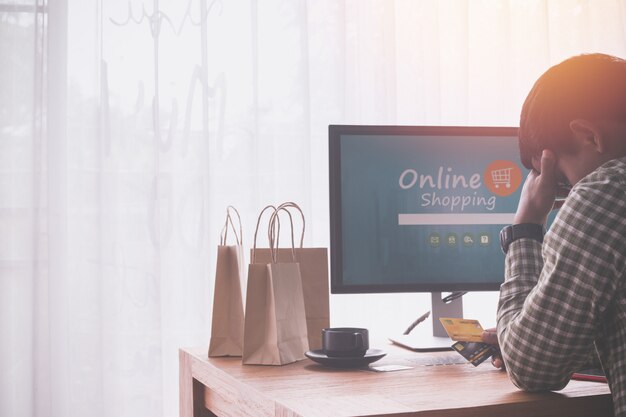As a freelancer, selling digital products is one of the most effective ways to earn passive income. From eBooks and online courses to digital artwork and software, the opportunities are endless. The best part? You don’t need to invest money in setting up an online store or pay monthly fees to sell your digital products. In this article, we’ll explore where to sell digital products for free, how to get started, and tips for maximizing your profits as a freelancer.
Gumroad: Simple and Free Platform for Freelancers

What is Gumroad?
Gumroad is one of the easiest platforms for sell digital products for free online. Whether you’re selling an eBook, design templates, or music tracks, Gumroad lets you set up a store for free. The platform takes a small fee per transaction, but there are no upfront costs or monthly subscription fees.
How to Get Started:
- Sign up for a free account on Gumroad.
- Upload your digital products (PDFs, MP3s, or other files).
- Customize your product page.
- Share the link to your store with your audience.
Pros:
- No monthly fees.
- Simple interface.
- Allows instant payouts.
- You can offer pay-what-you-want pricing.
Cons:
- Transaction fee of 8.5% + 30 cents per sale.
Etsy: Popular Marketplace for Digital Creators
What is Etsy?
Etsy is known for handmade crafts, but it’s also a great place to sell digital products for free such as printables, artwork, and even design templates. It has a large, active community of buyers, making it an excellent platform to showcase your digital creations.
How to Get Started:
- Create an Etsy shop.
- Upload digital files, including artwork, templates, or planners.
- Set your prices and provide descriptions.
- Promote your Etsy shop through social media.
Pros:
- Huge audience and community.
- Easy setup.
- Option to sell both physical and digital products.
Cons:
- Etsy charges a listing fee ($0.20 per item) and transaction fees (5% of the sale price).
- Competition can be tough.
Payhip: No Setup Fees, Just a Small Transaction Fee

What is Payhip?
Payhip allows you to sell digital products with no setup fees and only a small transaction fee. It’s a great choice for freelancers who want to sell a variety of products, such as eBooks, software, and digital art, without worrying about monthly fees.
How to Get Started:
- Create a free Payhip account.
- Upload your digital products.
- Customize your storefront and set up your payment options (PayPal, Stripe).
- Share your Payhip store with your audience.
Pros:
- No monthly fees or setup fees.
- Transaction fee of 5% on each sale.
- Customizable storefront.
Cons:
- 5% transaction fee per sale.
Big Cartel: Sell Digital Products for free
What is Big Cartel?
Big Cartel is a platform designed for artists, creators, and freelancers to sell their work online. While Big Cartel is mainly used by artists selling physical products, it’s also a great option for freelancers selling digital products like prints, music, and templates.
How to Get Started:
- Sign up for a free account.
- Set up your online store.
- Upload your digital products and define your prices.
- Share the link with your audience.
Pros:
- Free plan available (up to 5 products).
- Simple and easy-to-use platform.
- Customizable store design.
Cons:
- Free plan allows only 5 products.
- Transaction fees are applicable, but they are lower than some other platforms.
Sellfy: Simple Platform with Free Plan
What is Sellfy?
Sellfy is another simple and free platform that allows freelancers to sell digital products like eBooks, digital art, and design assets. The free plan allows you to sell up to 10 products, making it a great option for freelancers just starting out.
How to Get Started:
- Sign up for a free account on Sellfy.
- Upload your digital products.
- Set up a storefront and link your PayPal account for payments.
- Share your products on social media or your blog.
Pros:
- Easy to use.
- Free plan with up to 10 products.
- Ability to sell both digital and physical products.
Cons:
- The free plan only allows for up to 10 products.
- Transaction fees are involved.
Facebook Marketplace: A Free Way to Sell Digital Products

What is Facebook Marketplace?
While Facebook Marketplace is primarily used for selling physical goods, you can also sell digital products through the platform by creating a listing. You can promote your products to Facebook users and local groups interested in digital items like eBooks, guides, or digital art.
How to Get Started:
- Go to the Facebook Marketplace and create a free listing.
- Upload your digital product (as a file or link).
- Write a compelling description and price your product.
- Share your listing in relevant Facebook groups.
Pros:
- Completely free to list products.
- No transaction fees.
- Access to a huge audience.
Cons:
- Limited control over how digital products are presented.
- Only works well for certain types of products (like guides, eBooks, etc.).
Google Drive or Dropbox + PayPal: Sell Directly
What is Google Drive/Dropbox + PayPal?
For those who want the simplest method to sell digital products without using a third-party platform, using Google Drive or Dropbox to store your products and PayPal for payments is a viable option. You can easily share download links once a purchase is made.
How to Get Started:
- Upload your digital product (eBooks, design files, etc.) to Google Drive or Dropbox.
- Set up a PayPal account to receive payments.
- Create a website, blog, or social media post with links to your products and payment options.
- After receiving payment, send the product link to the customer.
Pros:
- Completely free.
- No transaction fees if you use PayPal.
- Full control over your sales and files.
Cons:
- Not a dedicated selling platform.
- Needs some technical knowledge (to set up payment and file-sharing links).
Shopify (Free Trial)
What is Shopify?
While Shopify is typically a paid platform, it does offer a free trial for freelancers looking to sell digital products. Shopify is a powerful eCommerce platform that allows you to create a customized store to sell digital products like eBooks, printables, and software.
How to Get Started:
- Sign up for the 14-day free trial.
- Upload your digital products.
- Customize your online store.
- Share your Shopify store link on social media.
Pros:
- Highly customizable.
- Great for scaling your business.
- Strong analytics and sales features.
Cons:
- After the trial, it becomes a paid platform.
- It requires a bit of setup compared to other platforms.
Creative Market: Sell Your Digital Design Products

What is Creative Market?
Creative Market is a marketplace specifically for creative products like fonts, graphics, templates, and design assets. If you’re a designer or digital artist, this is a great place to sell your work to a community of creative professionals.
How to Get Started:
- Create a free account on Creative Market.
- Upload your digital products, like design templates, fonts, or digital art.
- Promote your store to attract customers.
Pros:
- Highly targeted audience (designers, creators).
- No upfront costs.
- Great exposure within the design community.
Cons:
- Marketplace competition.
- Creative Market takes a percentage of each sale.
Conclusion
Selling digital products online is a great way to earn passive income as a freelancer. Whether you use platforms like Gumroad, Etsy, Payhip, or even Facebook Marketplace, there are several free platforms to choose from. Each offers different features and benefits, so it’s important to select the one that aligns best with your products and audience.
To get started, choose a platform, upload your products, and start promoting them through your social media, blog, or website. By creating high-quality products and using the right sales channels, you can easily sell your digital creations and grow your freelance business.




